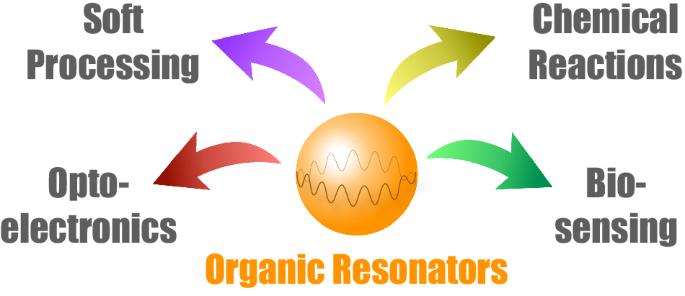用功能有机材料组装光学微谐振器的超分子方法学
IF 2.7
4区 化学
Q3 POLYMER SCIENCE
引用次数: 0
摘要
光学微谐振器是一种微米尺度的物体,可以通过边界处的全内反射将光线限制在其内部。除了激光振荡器、光学传感器和量子存储器等成熟的应用外,光学谐振器在化学和生物学领域作为微小、高灵敏度的传感器再次引起人们的关注,它可以在没有任何连接线的情况下在环境和生物组织及细胞内工作。光学谐振器应具有促进分子相互作用和生物兼容性的功能,但这对传统材料和加工技术来说具有挑战性。与此相反,作者们一直在利用超分子化学来解决这一问题,超分子化学可以在溶液中利用具有化学和生物功能的有机材料组装光学谐振器。本文回顾了我们在制造有机光学谐振器的方法及其新出现的光学特性方面取得的最新进展。光学谐振器作为微小、高灵敏度的传感器,在化学和生物学领域再次引起了人们的关注,它可以在环境中以及生物组织和细胞内工作,无需任何连接线。光学谐振器应具有促进分子相互作用和生物兼容性的功能,但这对传统材料和加工技术来说具有挑战性。与此相反,作者一直在利用超分子化学来解决这一问题。本文回顾了我们在制造有机光学谐振器的方法及其新兴光学特性方面的最新进展。本文章由计算机程序翻译,如有差异,请以英文原文为准。


Supramolecular methodologies for the assembly of optical microresonators from functional organic materials
An optical microresonator is a micrometer-scale object that can confine light inside its body via total internal reflection at the boundary. In addition to well-established applications, including laser oscillators, optical sensors, and quantum memory, optical resonators have attracted renewed attention in chemistry and biology as minute and highly sensitive sensors that work in the environment and inside biological tissues and cells without any connected wires. Optical resonators should be functional for facilitating molecular interactions and biological compatibility, which is, however, challenging with conventional materials and processing techniques. In contrast, the authors have been tackling this issue by using supramolecular chemistry, which enables the assembly of optical resonators from chemically and biologically functional organic materials in solution. This article reviews our recent progress on the methodologies for making organic optical resonators and their emergent optical properties. Optical resonators have attracted renewed attention in chemistry and biology as minute and highly sensitive sensors that work in the environment and inside biological tissues and cells without any connected wires. Optical resonators should be functional for facilitating molecular interactions and biological compatibility, which is, however, challenging with conventional materials and processing techniques. In contrast, the authors have been tackling this issue by using supramolecular chemistry. This article reviews our recent progress on the methodologies for making organic optical resonators and their emergent optical properties.
求助全文
通过发布文献求助,成功后即可免费获取论文全文。
去求助
来源期刊

Polymer Journal
化学-高分子科学
CiteScore
5.60
自引率
7.10%
发文量
131
审稿时长
2.5 months
期刊介绍:
Polymer Journal promotes research from all aspects of polymer science from anywhere in the world and aims to provide an integrated platform for scientific communication that assists the advancement of polymer science and related fields. The journal publishes Original Articles, Notes, Short Communications and Reviews.
Subject areas and topics of particular interest within the journal''s scope include, but are not limited to, those listed below:
Polymer synthesis and reactions
Polymer structures
Physical properties of polymers
Polymer surface and interfaces
Functional polymers
Supramolecular polymers
Self-assembled materials
Biopolymers and bio-related polymer materials
Polymer engineering.
 求助内容:
求助内容: 应助结果提醒方式:
应助结果提醒方式:


